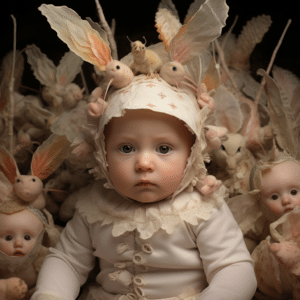
Understanding Baby Humping: Sleep Soothing and Behavior
What Is Humping In Babies: Babies soothe themselves to sleep without difficulty, while at other times, they need extra effort to fall asleep. Babies hump themselves in an attempt to bring themselves to sleep. Babies do not have well-developed reasoning capacity, and their humping may not connote any sexual behavior but as a way of nesting or rocking before falling asleep as they used to in their mother’s uterus.
However, for older babies, it is crucial to confirm whether the baby has been exposed to sexual content or abuse.

What Is Humping In Babies
Thinking of humping babies as a sexual expression may be offensive as babies have no reasoning capacity to engage in such acts intentionally. In babies, it is more of a nesting or rocking motion that helps soothe them to sleep. It is common in children as young as three months. Such infants take humping as a continuation of rocking they enjoyed in the uterus. Humping should not cause panic as it is temporary, and the baby will outgrow it. However, if the habit persists, you can help them drop it.
Why Do Babies Hump To Sleep?
Babies may want to soothe themselves for several reasons;
- When a child is tired, he might hump to get to relax and be able to fall asleep.
- Discomfort. A young child may be uncomfortable with a diaper or pajamas and will try to hump to make himself comfortable.
- Boredom. When you put your baby to bed when he is not ready to sleep, he will be bored and might start humping to keep himself busy.
- To attract attention. When you put your baby to bed hungry, cold, or wet, they might hump to signal a desire to be attended to their needs.
- It helps them calm down when in unfamiliar environments.
- A child might hump when they have rashes or mild pains in their diaper area.
- As a baby grows, he discovers that they have some sensational body parts and may want to explore.
- Often, babies hump to soothe themselves to sleep.
- An older child may hump when there is a diversion from the norm in a family, such as a new birth, divorce, or the death of a loved one.
How To Stop Humping From Becoming A Habit
When a baby starts to hump, it may not raise any concern, but if it persists, you will need to help your child overcome it before it becomes a habit. These tips below might help you in stopping this habit.
Distract
One way of stopping a baby from humping is to distract them. When you catch them humping, try to divert their attention and have them engage in other self-soothing methods, such as suckling a pacifier.
Check From To Time
Where possible, monitor their actions when they sleep. This way, you will be able to tell what might be the cause of the humping and help the child discontinue the habit.
Address Needs
We have seen one of the reasons why babies hump is to attract attention and have their needs met. Before putting your baby to bed, ensure you have fed, bathed, and changed them into comfortable pajamas.
Develop A Proper Sleeping Routine
It is crucial to have a proper sleeping routine for your baby. You could have a routine such as bathing him, breast or bottle feeding, dim lights in the room, and minimizing distractions. You should also put the baby to bed when ready to sleep but not already asleep.
Reduce Stress
A baby will easily pick cues from a new environment. To help them not hump, try and make the sleeping area as familiar as possible.
Reassure
When there is a diversion from the norm, an older child might tend to hump to comfort himself. You could reassure the child of your love and support him to adapt to the new norm.
Learn How To Communicate With The Baby
As a parent or caretaker, it is important to pick clues on what your child needs. For instance, a baby may hump when their diaper is tight, and when you are unable to understand what they are trying to communicate, they could end up with diaper rashes.
Signs Of A Self-Soothing Baby
Often, we see babies do things that adults don’t understand and may worry when there is no need for that. Below are some signs that your baby is self-soothing;
- Moving head back and forth.
- Suckling of pacifier, thumb, or hand.
- Rolling or re-positioning in bed.
- Soft crying with lulls or pauses.
- Playing with feet, hands, or fingers.
- Rubbing blankets or sheets against their face.
- Gently banging their head, legs, and hands against the crib.
- Singing, babbling, talking, or humming.

Alternative Soothing Methods
Apart from humping, you can help a baby soothe themselves to sleep using other methods;
- Rock the baby.
- Swaddling.
- Allow the child to sleep in their own space.
- Set regular sleeping times with a consistent routine in a comfortable, low-simulation environment.
- Give a pacifier with no strings or cords.
- Limit lights and noise in the sleeping area.
- Read to the child a bedtime story, sing a lullaby, or play soft music.
- Ensure you have fed the baby well before getting him ready for bed.
- Ensure the crib or cot is safe for the baby. For instance, remove the blankets, toys, strings, or cords before putting the child down to sleep.
- Allow the baby to self-soothe before picking him up from the crib.
- Regulate heat in the room and dress the child appropriately.
In conclusion, it is normal for babies to hump themselves to sleep. Young children hump to soothe themselves, relax, explore, or draw attention due to a need. However, for older children who hump in sleep, it is essential to confirm whether they have been exposed to sexual content or have been introduced to sexual activities.